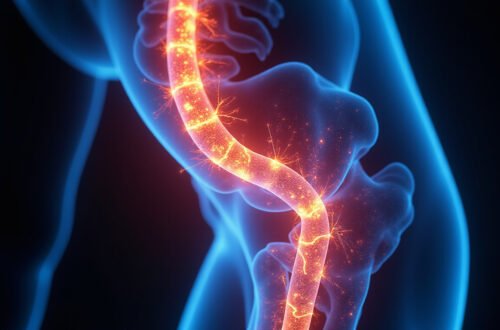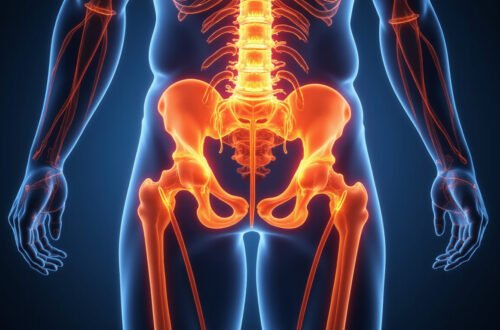Chronic pain can drastically affect your quality of life, limiting daily activities and diminishing overall well-being. One increasingly popular and effective method for alleviating persistent nerve pain is nerve decompression. This technique targets the compression of nerves, which can cause uncomfortable symptoms like numbness, tingling, and sharp pain. In this article, we will explore what nerve decompression is, the most effective techniques available, and how they can provide quick relief for chronic pain sufferers.
Understanding Nerve Decompression
Nerve decompression refers to a set of medical approaches designed to relieve pressure on nerves that are being compressed by surrounding tissues such as muscles, tendons, or bones. When a nerve is compressed, it can lead to chronic inflammation, pain, and impaired function. Common conditions involving nerve compression include carpal tunnel syndrome, sciatica, tarsal tunnel syndrome, and thoracic outlet syndrome.
The goal of nerve decompression is to restore the normal function of a nerve by eliminating or reducing the external forces that are pressing on it. This not only helps to relieve pain but also can prevent further nerve damage.
Common Causes of Nerve Compression
Before diving into decompression methods, it’s essential to understand what causes nerve compression:
- Repetitive strains or motions (e.g., typing, lifting)
- Traumatic injuries or accidents
- Herniated discs in the spine
- Bone spurs or arthritis-related changes
- Tight muscles or scar tissue buildup
- Prolonged poor posture or ergonomics
Identifying the root cause is vital because treatment plans, including nerve decompression techniques, can vary depending on the underlying condition.
Effective Techniques for Nerve Decompression
There are multiple ways healthcare professionals approach nerve decompression, ranging from conservative therapies to surgical interventions. Here is a breakdown of effective techniques designed to relieve chronic nerve pain quickly:
1. Physical Therapy and Stretching
Targeted physical therapy can help alleviate nerve compression by strengthening the muscles around the affected nerve and improving posture. Therapeutic stretches increase flexibility and reduce tension in muscles and soft tissues that may be compressing the nerve.
Benefits:
- Non-invasive
- Can improve nerve mobility
- Improves circulation to the nerve
- Helps prevent recurrence
2. Nerve Gliding Exercises
Nerve gliding (also called neural mobilization) involves specific exercises that encourage the gentle movement of nerves through surrounding tissues. This technique reduces adhesions or scar tissue that may restrict nerve movement and cause pain.
Examples Include:
- Median nerve glides for carpal tunnel syndrome
- Sciatic nerve mobilization for lower back pain
3. Medications and Injections
In some cases, doctors may prescribe anti-inflammatory medications or corticosteroid injections to reduce swelling around the nerve. These interventions can provide rapid pain relief and decrease nerve irritation.
Use Cases:
- Acute flare-ups
- When physical therapy alone is insufficient
4. Ultrasound Therapy
Therapeutic ultrasound uses sound waves to promote tissue healing and reduce inflammation around compressed nerves. This method is typically part of a comprehensive physical therapy program and can accelerate recovery.
5. Surgical Nerve Decompression
When conservative treatments fail, surgical intervention may be recommended. Surgery involves releasing or removing the structures compressing the nerve, such as:
- Cutting tight ligaments (e.g., transverse carpal ligament in carpal tunnel release)
- Removing bone spurs or cysts
- Decompressing nerve pathways, like in trigeminal neuralgia surgery
Surgical decompression often provides significant relief when performed by an experienced specialist and paired with postoperative rehabilitation.
When to Consider Nerve Decompression
If you experience any of the following symptoms that persist or worsen despite rest and basic care, it’s worth consulting a healthcare provider to explore nerve decompression:
- Persistent numbness or tingling in the hands, feet, or limbs
- Sharp, burning, or shooting pain along a nerve pathway
- Muscle weakness or loss of coordination
- Symptoms that disrupt sleep or daily activities
Early diagnosis and treatment help prevent irreversible nerve damage and improve recovery outcomes.
Advantages of Nerve Decompression Techniques
Nerve decompression methods offer several benefits to patients struggling with chronic nerve pain:
- Target root cause rather than just symptoms
- Reduce inflammation and nerve irritation
- Restore function and improve quality of life
- Quick relief when managed correctly
- Decrease dependency on pain medications
5 Steps to Optimize Your Nerve Decompression Treatment
To maximize the benefits of nerve decompression, consider these tips:
- Seek Specialist Consultation: Get evaluated by a neurologist, orthopedic surgeon, or pain specialist.
- Follow a Customized Treatment Plan: Stick to prescribed therapy, exercises, and medications.
- Maintain Good Posture: Avoid activities that exacerbate nerve compression.
- Incorporate Lifestyle Changes: Use ergonomic tools, maintain a healthy weight, and stay active.
- Monitor Progress Regularly: Report changes or concerns to your healthcare provider promptly.
Frequently Asked Questions (FAQs)
What is nerve decompression surgery, and is it safe?
Nerve decompression surgery involves relieving pressure on a compressed nerve through a minimally invasive or open surgical procedure. It is considered safe when performed by an experienced surgeon and can significantly reduce chronic nerve pain and improve function (source).
How long does it take to recover from nerve decompression therapy?
Recovery varies depending on the technique used. Non-surgical therapies such as physical therapy may take weeks to months for full benefit, while surgical recovery can range from several weeks to a few months, often followed by rehabilitation.
Can nerve decompression help with sciatica?
Yes, nerve decompression techniques, including therapy and surgery, are commonly used to relieve sciatica, which occurs due to compression of the sciatic nerve typically from a herniated disc or spinal stenosis.
Conclusion: Take Control of Chronic Pain with Nerve Decompression
If you’re struggling with chronic pain caused by nerve compression, nerve decompression offers a valuable path to fast, effective relief. Whether through physical therapy, minimally invasive treatments, or surgery, the right nerve decompression technique can restore your comfort and improve your mobility. Don’t let persistent nerve pain govern your life — consult a healthcare professional today to discuss if nerve decompression is suitable for you and take the first step towards lasting healing and better quality of life.







